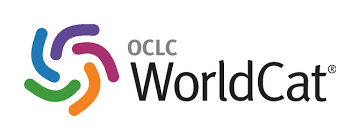Increased Sorghum (Sorghum bicolor, L) Productivity: Unlocking its potential for food crisis mitigation for small holder communal farmers in the Semi-Arid regions: A case of the Zambezi Valley Region in Zimbabwe
Review Article
DOI:
https://doi.org/10.47504/IJAGRI.2020.5122Keywords:
Sorghum, Trends, Yields, Food SecurityAbstract
This paper analyses current and projected trends of sorghum production in Mbire as influenced by the ZRBF programme from 2016 to 2020. Average cereal production in this district has been dominated by maize 56.01% with sorghum accounting for 43.99 % since 2015. Between 2014 and 2017 trends in area, production and yield of sorghum were negative but were positive from 2018 to 2020. Mean yield was 0.29 t/ha with upper and lower limits of 0.41 t/ha and 0.10 t/ha respectively. Trends in area planted under maize and sorghum in the district showed a gradual increase for sorghum from 7000ha in 2015 to approximately 12000 ha in 2020 and an inverse trend for maize from approximately 12000 ha to 7000 ha for the same period. Rainfall varied during these years with a mean of 702.3mm per year which was slightly above normal for the region. Sorghum was primarily used for food (62 %) whilst 28% was used for food processing with just 10% for animal feed and non- food uses. Trading of sorghum attached USD value over the years ranged between USD 240 to 290 per MT as officially communicated by GMB and Delta Beverages. There was a general positive trend in area planted under sorghum with corresponding increase in production indicating farmers’ adoption of sorghum production. Increasing production of sorghum by 41.5% from the baseline scenario is forecasted by 2025. These results suggest that in future, sorghum will play an increasingly important role in food security of these communities.
Downloads
References
Angelucci F, Balie J, Gourichon H, Mas Aparisi A and Witwer M. (2014). Monitoring and analysing food and agriculture policies in Africa. MAFAP Synthesis Report 2013. MAFAP synthesis Report Series, FAO, Rome, Italy.
Bender MV. (2011). Millet is gone! Considering the demise of Eleusine agriculture on Kilimanjaro. The International Journal of African Historical Studies,44(2).
Kilambya D and Witwer M. (2013). Analysis of incentives and disincentives for sorghum in Kenya. Technical notes series, Monitoring African Food and Agricultural Policies (MAFAP). Rom: Food and Agriculture Organisation of the United Nations.
Orr A, Mwena C, Gierend A and Nedumaran S. (2016). Sorghum and Millets in Eastern and Southern Africa. Facts, Trends and Outlook. Working Paper Series No. 62. ICRISAT Research Program, Markets, Institutions and Policies. Patancheru 502 324, Telangana, India: International Crops Research Institute for the Semi-Arid Tropics. 76pp.
Taylor JRN and Emmambux NM. (2007). Traditional African Cereals -Overview.
World Food Programme Zimbabwe (WFP) Monthly Food security Outlook, January. (2020). https://documents.wfp.org/stellent/groups/public/documents/ena/wfp291896.pdf
Zimbabwe Resilience Building Fund (ZRBF) Program Annual Report, (2016). Zambezi Valley Alliance
Zimbabwe Resilience Building Fund (ZRBF) Program Annual Report, (2017). Zambezi Valley Alliance
Zimbabwe Resilience Building Fund (ZRBF) Program Annual Report, (2018). Zambezi Valley Alliance
Zimbabwe Resilience Building Fund (ZRBF) Program Annual Report, (2019). Zambezi Valley Alliance.
Zimbabwe Vulnerability Assessment Committee (ZIMVAC), (2015). Rural Livelihoods Assessment Report. Food and Nutrition Council (NFC). SIRDC: 1574 Alpes Road, Hatcliffe, Harare, Zimbabwe.
Zimbabwe Vulnerability Assessment Committee (ZIMVAC), (2017). Rural Livelihoods Assessment Report. Food and Nutrition Council (NFC). SIRDC: 1574 Alpes Road, Hatcliffe, Harare, Zimbabwe.
Zimbabwe Food Crisis Policy Brief. (2020). https://fews.net/southern-africa/zimbabwe/food-security-outlook-update/april-2020
Downloads
Published
Issue
Section
License
Copyright (c) 2020 Edmore Hungwe, J Masaka, V Makuvaro, E Tombo

This work is licensed under a Creative Commons Attribution-NonCommercial 4.0 International License.





2.png)






